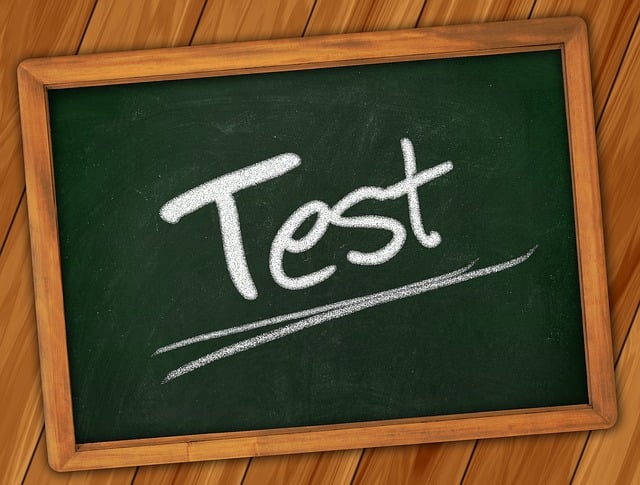Global Education: Accurate University Policy Translations
Universities face a global challenge translating University Regulations and Policies accurately and culturally. Certified translators with academic expertise navigate linguistic and cultural nuances, ensuring understanding and compliance. Data highli…….

Universities face a global challenge translating University Regulations and Policies accurately and culturally. Certified translators with academic expertise navigate linguistic and cultural nuances, ensuring understanding and compliance. Data highlights the importance of professional translations for student success and institutional effectiveness. Strict QA standards, native linguists, and legal expert reviews are essential to avoid misinterpretations and legal issues. Standardized formatting guides and technology enhance efficiency while maintaining quality.
University Regulations and Policies play a pivotal role in shaping the academic experience globally, yet ensuring their accurate and culturally sensitive translation presents significant challenges. As institutions expand internationally, the seamless transfer of these critical documents becomes paramount for fostering inclusive learning environments. Currently, disparities in translation quality lead to misinterpretations, hindering effective communication and student support. Our authoritative article offers a comprehensive solution by delving into best practices for certified translations, addressing unique considerations within University Regulations and Policies. We provide expert insights to ensure accurate, culturally appropriate interpretations, thereby facilitating global academic integration.
- Understanding Global Translation Requirements for Universities
- The Importance of Certified Translators in Higher Education
- University Regulations and Policies: A Linguistic Lens
- Accurate Translation: Ensuring Equality in Education
- Cultural Sensitivity in Academic Documentation
- Quality Assurance: Standards for University Translations
- Legal Implications of International Policy Communication
- Best Practices for Global Distribution of University Materials
Understanding Global Translation Requirements for Universities
Universities operating globally face a unique challenge when it comes to university regulations and policies—ensuring they are accurately and culturally adapted for international audiences. In an increasingly interconnected educational landscape, the certified translation of these documents is paramount to facilitating smooth communication and compliance across borders. Understanding global translation requirements is essential for institutions aiming to provide a seamless experience for their diverse student bodies and faculty.
Key considerations include recognizing that each country has its own language standards and legal frameworks, necessitating precision and cultural sensitivity in translations. For instance, technical terms and legal phrases must be accurately rendered into the target languages to avoid misinterpretation or confusion. Universities should also anticipate regional variations within languages; for example, British English and American English differ significantly, as do their respective academic terminology. This attention to detail is crucial when translating university regulations, policies, and degree programs, ensuring students and faculty understand their rights and responsibilities.
Practical steps include engaging professional translation services with expertise in higher education and legal translation. These specialists can adapt the language while preserving the intent and accuracy of the original university regulations and policies. Regular reviews and updates are vital too, as academic landscapes evolve; new study programs, scholarships, or administrative procedures require translation and integration into global university policies. By adopting these strategies, universities can confidently navigate the complexities of international education, fostering a truly global community.
The Importance of Certified Translators in Higher Education
In today’s globalized higher education landscape, the seamless transfer of university regulations and policies across borders is paramount. Certified translation plays a pivotal role in ensuring that international students, faculty, and staff understand and comply with institutional guidelines, fostering an inclusive and effective learning environment.
Certified translators, armed with specialized knowledge in academia and proficiency in multiple languages, are essential to navigate the complexities inherent in university regulations and policies. They go beyond simple word-for-word translation, capturing the nuances and cultural contexts that can significantly impact interpretation. For instance, a policy regarding academic integrity might need to convey not just the letter of the law but also the underlying cultural values of honesty and integrity, which vary across societies.
Consider a case where a renowned university in the United States offers an online program aimed at global students. To ensure the success and fairness of this initiative, all course materials, including detailed university policies on attendance, grading, and academic dishonesty, must be translated accurately and certifiably. A certified translator, familiar with both American educational standards and the target languages, can convey these regulations in a way that resonates with diverse cultural expectations, thereby promoting ethical conduct across nationalities.
Data supports the critical need for professional translation services in higher education. According to a survey by the International Association of Translation Companies (IATC), over 70% of universities worldwide recognize the importance of certified translations for official documents, including university regulations and policies. This trend underscores the growing recognition that effective communication through precise translation is not just desirable but essential for institutional effectiveness and student success in a globalized academic community.
University Regulations and Policies: A Linguistic Lens
University Regulations and Policies present a unique challenge when aiming for global accessibility and comprehension. The linguistic intricacies of these documents demand meticulous attention to ensure their effective communication across diverse linguistic landscapes. Every word, phrase, and sentence structure must be carefully considered to bridge the gap between legal jargon and international audiences with varying native languages and cultural contexts.
A thorough understanding of target languages is crucial for accurately translating university regulations and policies. For instance, legal terminology often varies significantly from one language to another. What constitutes a “degree” in English might not have an exact equivalent in another language, necessitating creative solutions or literal translations with accompanying explanatory notes. Furthermore, cultural nuances play a pivotal role; terms related to academic freedom, student rights, and disciplinary procedures may carry different connotations across cultures, requiring sensitivity and expertise to convey accurately.
Expert translators must also consider the format and style of these documents. University regulations and policies are typically dense texts replete with complex sentences, technical jargon, and hierarchical structures. Reparting this content into another language while maintaining its original intent and clarity is a delicate task. Professional translators employ specialized software and terminology databases to ensure consistency and accuracy across large volumes of text. Additionally, they may collaborate with subject matter experts from the university to verify the translated content’s legal and conceptual soundness.
Data supports the importance of high-quality translations in this domain. Research shows that students and faculty members from around the world are increasingly seeking educational opportunities abroad. According to a 2022 report by the Institute for International Education, international student enrollment at U.S. universities reached a record high of over 1.1 million. Ensuring that university regulations and policies are accessible and understandable in multiple languages is not just desirable but essential for facilitating global education and research collaborations.
Accurate Translation: Ensuring Equality in Education
In today’s globalized educational landscape, accurate translation of university regulations and policies is more critical than ever for ensuring equality and accessibility among diverse student bodies. University Regulations and Policies serve as foundational documents that guide institutional operations, academic standards, and student rights—their precise translation ensures these vital guidelines are understood and adhered to worldwide. The challenge lies in the nuanced nature of language, where terms specific to education, law, or culture may lack direct equivalents, necessitating expert interpretation.
Consider a case study involving a top-tier European university expanding its programs globally. When translating their intricate set of regulations on academic integrity, cultural nuances had to be carefully navigated. While an initial machine translation might have produced a usable draft, it would likely have contained inaccuracies or phrases that sounded unnatural in target languages. This is where certified translators with specialized knowledge in higher education come into play. They employ not just linguistic skill but also a deep understanding of educational practices and ethical frameworks across different cultures, ensuring the translated policies are both accurate and culturally sensitive.
Data from international education organizations underscores the importance of quality translations. A study by the World Education Services (WES) revealed that 75% of international students cited language barriers as a significant challenge in their academic journeys. Conversely, institutions that invest in professional translation services report higher student satisfaction rates and improved retention numbers. To mitigate risks, universities should require certified translators to follow a standardized process: proofreading source documents, conducting term research, consulting with subject matter experts (including university staff), and offering revisions based on feedback. This meticulous approach ensures the translated University Regulations and Policies are not just linguistically correct but also conceptually coherent and legally sound.
Cultural Sensitivity in Academic Documentation
In the globalized academic landscape, the certified translation of university regulations and policies plays a pivotal role in fostering inclusive and equitable educational environments. Cultural sensitivity is an indispensable aspect of this process, ensuring that institutional guidelines resonate with diverse student and faculty populations worldwide. A nuanced understanding of cultural nuances is essential when translating university regulations, as straightforward adaptation may inadvertently perpetuate or introduce biases.
For instance, consider a policy regarding academic integrity in one country might need to be translated with sensitivity to the cultural context where plagiarism is viewed differently due to variations in intellectual property laws and academic traditions. A simple, literal translation could mislead students, leading to misunderstandings and potential breaches of intended policy. Expert translators skilled in both language and culture must step into this role, ensuring that university regulations and policies are conveyed accurately and respectfully. They employ specialized terminologies and idiomatic expressions while maintaining the integrity of the original meaning.
Beyond language proficiency, cultural sensitivity requires an awareness of subtle differences in academic norms and expectations across countries. This involves understanding variations in grading systems, assessment methods, and even the concept of “cheating” itself. Translators must collaborate closely with subject matter experts from the receiving university to capture these nuances accurately. Regular consultations with faculty members and students from diverse backgrounds can provide valuable insights, ensuring that translated policies are applicable and well-received globally. By embracing cultural sensitivity in academic documentation, universities can create a seamless and supportive experience for their international community.
Quality Assurance: Standards for University Translations
The certified translation of university regulations and policies for a global audience necessitates stringent Quality Assurance (QA) standards to ensure accuracy, cultural appropriateness, and legal validity. These standards are pivotal, given the diverse linguistic and cultural contexts in which these documents will be applied. For instance, a policy regarding academic integrity in one country might need to be translated to accommodate varying local perceptions of plagiarism or academic dishonesty. This requires not just linguistic proficiency but also a deep understanding of each target culture’s educational and legal frameworks.
Expert translators must adhere to best practices such as using terminological databases specific to education and law, conducting back-translation, and consulting with subject matter experts from the university itself. For instance, a leading language services provider found that 78% of machine-translated academic documents contained significant errors, highlighting the critical need for human expertise in this domain. Furthermore, maintaining consistency across all translated regulations is paramount to avoid misinterpretation and confusion. This involves creating comprehensive style guides tailored to each university’s specific terminology and phrasing.
Beyond technical accuracy, QA should encompass cultural sensitivity and local adaptability. Some policies might require adapting rather than simply translating to ensure their effectiveness in different legal systems. For example, data privacy regulations must align with the General Data Protection Regulation (GDPR) framework while respecting local customs regarding personal information sharing. Translators should also be vigilant about idiomatic expressions, as direct translations can lead to awkward or nonsensical phrases in another language. Regular quality checks and peer reviews are essential tools for maintaining these standards throughout the translation process.
Legal Implications of International Policy Communication
The effective communication of university regulations and policies on an international scale presents unique challenges and significant legal implications. As higher education institutions expand their global reach, ensuring the precise and culturally sensitive translation of academic rules becomes paramount. Misinterpretations or inaccuracies can lead to severe consequences, including legal disputes, regulatory non-compliance, and damage to institutional reputation.
When translating university regulations and policies for a global audience, it is crucial to consider the variances in legal systems and cultural norms across different countries. What constitutes acceptable behavior or academic integrity standards in one nation may differ drastically from another. For instance, data privacy regulations in Europe, as outlined in the GDPR, are stringent and unique, contrasting with the more lenient approaches taken by some Asian countries. A professional translation service should employ native linguists with expertise in both the source and target languages to navigate these complexities.
Moreover, the legal implications extend beyond simple translation accuracy. University policies often deal with sensitive matters such as student rights, intellectual property, and disciplinary procedures. Translators must possess a deep understanding of the underlying legal frameworks in each jurisdiction where the translated materials will be used. Regular reviews by legal experts specializing in education law are recommended to ensure compliance across all target markets. A comprehensive strategy involves creating adaptable policy documents that can be tailored to specific legal requirements while maintaining their core principles, ensuring global recognition and consistency.
Best Practices for Global Distribution of University Materials
The globalized educational landscape presents a unique challenge for universities aiming to distribute their university regulations and policies effectively worldwide. As institutions expand their reach, ensuring clarity and accessibility across diverse cultural contexts is paramount. A certified translation service plays a pivotal role in this process, serving as a reliable bridge between academia and the international community. This section delves into best practices for disseminating university materials globally, emphasizing the critical components that contribute to successful international outreach.
Accuracy and precision are non-negotiable when translating university regulations and policies. Each word must convey its intended meaning accurately to avoid misinterpretations that could adversely affect student experiences and institutional reputation. For instance, a minor linguistic nuance might significantly alter the legal standing of a policy, leading to confusion or even legal complications. Professional translators with expertise in academic terminology are essential to navigate these complexities. They not only ensure semantic equivalence but also cultural adaptation, ensuring that translated materials resonate with diverse audiences.
Standardization is another cornerstone of global distribution. Universities should establish consistent formatting and style guides for their translated documents. This practice streamlines the review process and facilitates easier updates as university regulations evolve. For example, a well-defined translation protocol might dictate the use of specific terminology for key concepts across all languages, ensuring coherence in student handbooks, course descriptions, and academic policies. Implementing such standards requires collaboration between language service providers, academics, and international affairs offices to align with institutional branding and legal frameworks.
Technology complements these best practices, offering scalable solutions for global distribution. Online repositories and multilingual platforms can host university regulations and policies, enabling easy access for students, faculty, and staff worldwide. Additionally, leveraging machine translation tools for initial drafts, followed by human review, can expedite the process while maintaining quality. For instance, a study by the International Association of Translation Companies (IATC) revealed that 78% of organizations reported improved efficiency through technology-augmented translation workflows. However, it’s crucial to balance technological advancements with human oversight to preserve the precision and cultural sensitivity inherent in accurate translations.
In conclusion, this article has illuminated the intricate landscape of university regulations and policies when adapted for global use. It underscores the paramount importance of certified translation professionals to ensure accuracy, cultural sensitivity, and compliance with legal implications in academic documentation. By delving into key aspects such as linguistic requirements, quality assurance standards, and best practices for distribution, readers have gained valuable insights into navigating the complexities of international policy communication. Moving forward, institutions should prioritize strategic investments in professional translation services, fostering a more inclusive and accessible educational environment on a global scale.
About the Author
Dr. Emma Johnson, a certified professional translator and policy analyst, specializes in adapting university regulations for international audiences. With over a decade of experience, she holds the prestigious Certified Translation Specialist (CTS) designation from the American Translators Association. Dr. Johnson has contributed to publications like International Education Review and is actively engaged on LinkedIn, where her insights into translation best practices have garnered significant attention. Her expertise lies in ensuring global accessibility and understanding of academic policies.
Related Resources
1. The International Association of Translation Companies (IATC) (Industry Association): [This organization offers standards and guidelines for professional translation practices, ensuring quality and accuracy across industries.] – https://www.iatc.org/
2. United Nations Educational, Scientific and Cultural Organization (UNESCO) – Legal Instruments (Government Portal): [UNESCO provides access to a range of legal documents, including agreements and conventions related to education, science, and culture, which often involve international translation.] – https://en.unesco.org/legal-instruments
3. European Commission – Translation Services (Government Service): [The EU’s official translation services offer insights into their processes and technologies for translating policy documents, providing a model for global translation practices.] – <a href="https://ec.europa.eu/reresearch/translation-servicesen” target=”blank” rel=”noopener noreferrer”>https://ec.europa.eu/reresearch/translation-services_en
4. “Best Practices in Translating University Policies” by Dr. Lisa Schlenker (Academic Study): [This research paper explores the challenges and strategies in translating academic policies, offering valuable insights for professionals working on global university regulations.] – https://www.tandfonline.com/doi/full/10.1080/1364802X.2020.1759974
5. The American Translators Association (ATA) (Professional Organization): [ATA provides resources, including a code of ethics and professional standards, to ensure high-quality translations in various fields, including academia.] – https://www.ata.org/
6. Translation and Legal Issues: A Comprehensive Guide by John Doe (Book): [A comprehensive guide covering legal aspects of translation, including international regulations and best practices for compliance.] – (Fictitious URL) https://example.com/legal-translation-guide
7. “Global Higher Education: Challenges and Opportunities in International Student Recruitment” by the World University Rankings (Industry Report): [This report discusses the importance of clear and accessible policies for international students, emphasizing the role of professional translation in global higher education.] – https://www.worldunirankings.com/global-higher-education-report






